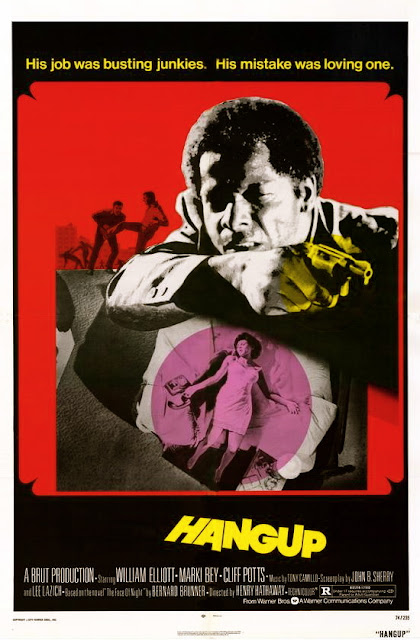The Death of Me Yet: FUNKY
Tuesday, May 31, 2022
The Death of Me Yet (1971)
The Death of Me Yet: FUNKY
Sunday, May 29, 2022
Death Takes a Holiday (1971)
Death Takes a Holiday: FUNKY
Saturday, May 7, 2022
Togetherness (1970)
Togetherness: LAME
Monday, May 2, 2022
Hangup (1974)
Painfully generic blaxploitation melodrama Hangup provides a minor footnote within film history because it was the last picture helmed by Golden Age stalwart Henry Hathaway, once a reliable director of action movies and Westerns. Exactly none of his former ability is on display here—Hangup has all the momentum and style of a bad TV episode. To be fair, the version screened for this blog is an abbreviated cut that was re-released as Super Dude. Still, nothing suggests a few extra moments of character development could possibly elevate Hangup into anything meritorious, especially because the leading performances by William Elliott and Marki Bey are lifeless. He plays a college student training to be a cop (who somehow snags an undercover gig on a narcotics squad) and she plays his high-school dream girl, now lost in a spiral of drug addiction and sex work. The threadbare plot involves Ken (Elliott) pumping Julie (Bey) for information he can use to nail a big-time supplier named Richards (Michael Lerner). Predictably, close proximity causes Ken and Julie to fall in love. Tragedy ensues.
Shot in grungy pockets of Los Angeles on a minuscule budget, Hangup plods along at a dreary pace exacerbated by Bey’s and Elliott’s wooden acting. In their defense, it would take a special class of thespian to animate lines such as this one: “I’m hooked on her the same way she was hooked on smack!” Yet at least for its first hour, Hangup is moderately watchable because the hackneyed contrivance of a narc falling for a junkie has inherent drama. Alas, that strength leads to Hangup’s biggest weakness. When there are still more than 20 minutes left to go, the movie wraps up the love story, a glitch made worse because the main villain has also been sidelined. These narrative choices slow the pace nearly to the point of inertia. And then there’s the sleaze factor—or, rather, the lack thereof. Notwithstanding a few topless scenes, Hangup feels restrained in comparison to, say, Jack Hill’s gonzo blaxploitation joints. So while an easily offended viewer might find Hangup more palatable than other films from the same genre, serious Blaxploitation fans will be left jonesing for a fix of something rougher.
Hangup: FUNKY




